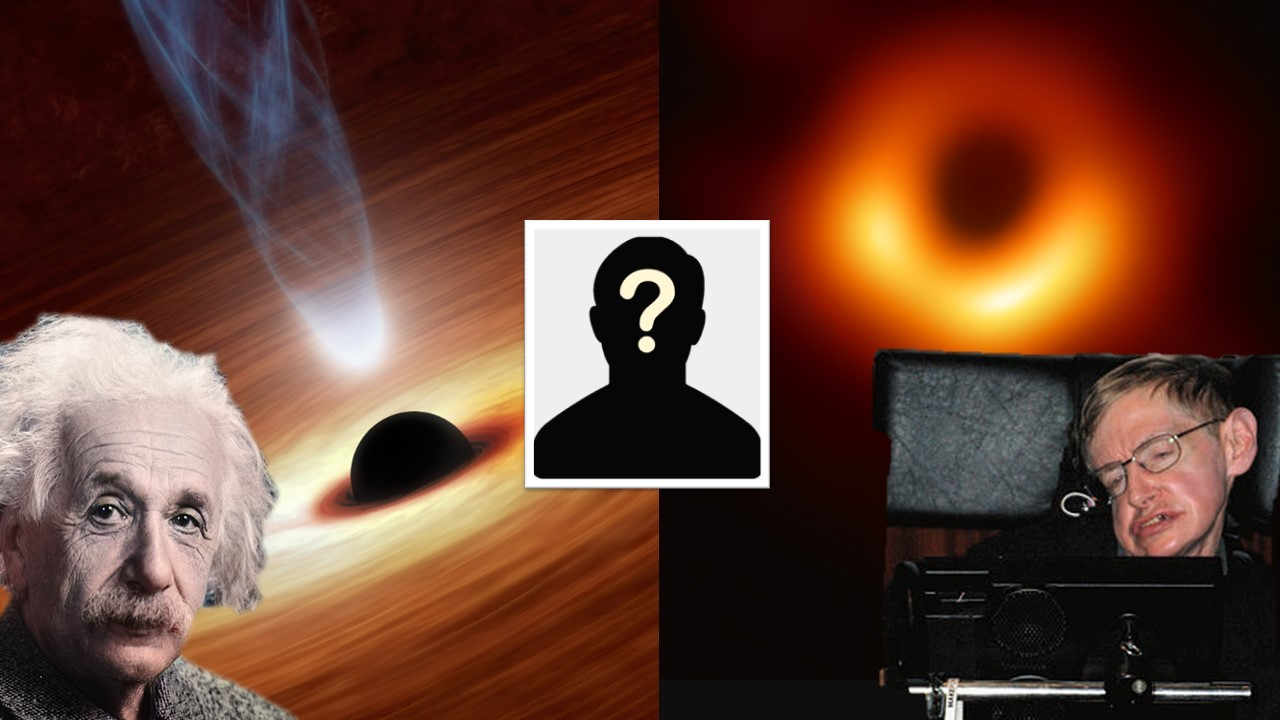
The black hole is a great source of mystery and inspiration for scientists and writers alike. These are abnormalities in space where the gravity is so strong that not even light, traveling at an enormous speed of 300,000 km/sec, can escape.
How did the idea of black hole come about?
In 1915, more than a hundred years ago, Albert Einstein published a theory of space and time or "spacetime" in which one of the crucial predictions was the bending of light as it approached a massy body, like the sun or a black hole.
That light bent in the presence of mass was confirmed in an experiment led by English astronomer Arthur Eddington in 1919. After this observation, Einstein's general relativity was taken more seriously, as it resurrected the original idea of black hole – which was published way back in 1784!
It was English astronomer John Michell who suggested the existence of a body so big that even light could not escape. As a result, such an object could not be seen directly but its gravitational effects on nearby bodies could be measured.
At that time, the term black hole did not exist. Astronomers instead used the term "dark stars" which is a pretty cool name to describe a stellar body hiding in plain sight.
In 1916, Karl Schwarzschild used Einstein's field equations of general relativity to calculate the radius up to which any object of mass must be "cramped" to make it a black hole. This is called the Schwarzschild radius.
For example: Earth crushed to the size of a pea would turn into a black hole.

Although the theory of general relativity implied the existence of a monstrous space object capable of trapping light in its grasp, Einstein wrote in a paper that a star would "never shrink" to zero size.
When will black hole form
A new development occurred in 1930. Indian physicist Subrahmanyan Chandrasekhar calculated how a star could actually shrink or collapse if it "ran out of hydrogen" or other nuclear fuels to burn.
Consequently, there come various stages in the star's life cycle. Upon collapse, the star may become a white dwarf - like our sun will - too feeble to burn bright in our skies.
Chandrasekhar predicted that a white dwarf with mass greater than "a limit" will be subject to further gravitational collapse, evolving into a different type of stellar remnant - a denser neutron star.
What would it take to form a black hole then? In 1939, American physicist Robert Oppenheimer produced a paper titled, "On Continued Gravitational Attraction" and in it calculated that a star would have to be at least three times as massive as the sun to become black hole.
Birth of black hole
The paper by Oppenheimer was the key factor in the rejuvenation of astrophysical research in the United States in the 1950s - mainly by John Archibald Wheeler.
In fact, the term black hole was coined in 1967 by Wheeler during a talk he gave at the NASA Goddard Institute of Space Studies. Not even light could escape from it, it was undetectable - hence, "black" hole.
One also could not tell from the outside what was inside the black hole. This means that the black hole contains a lot of information which is hidden from the outside world and Wheeler called this, "A Black Hole Has No Hair".
But in 1971, English mathematical physicist Roger Penrose described a way for information to be transferred from rotating black hole to an outside particle. Three years later, another method for the same was provided by cosmologist Stephen Hawking, as in Hawking radiation.
At around the same time in America, physicist Kip Thorne, one of Wheeler's doctoral students, developed the general relativistic theory of thin accretion disks around black holes, a flattened band of spinning matter around the event horizon.
Something you may have already seen in artist's impressions of the black hole:

Thorne compiled many theoretical results about the black holes in a 1994 book for non-scientists, titled Black Holes and Time Warps. It was a widely recognized book on the subject and translated into six languages.
Cut to present
The phenomenon of black hole captured the attention of some of the greatest minds in history and continues to surprise us even more in mainstream media.
Most recently, in the 2014 film "Interstellar" by director Christopher Nolan. Physicist Kip Thorne was also closely involved in the making and acted as executive producer.
Interstellar was a huge success - the science fiction movie project not only generated a fortune at the box office but also a new public interest regarding the black holes.
In 2019, the first picture of a black hole in Messier 87 was released based on data from 2017. It was compiled by the event horizon telescope - a collective effort of scientists from over 20 countries made it possible to see the distant space object by converting the entire planet Earth into a giant virtual telescope!
The image of black hole confirmed how lucky we are as a species at this particular time, with the capacity of the human mind to comprehend the universe, to have built all the science and technology to see it in glorious action.
On a fun ending note, black holes have come a long way - from gigantic mass eating monsters in space to the shape of a doughnut!






 Physics, astronomy and science history blog for students
Physics, astronomy and science history blog for students
Responsive Ad Slot